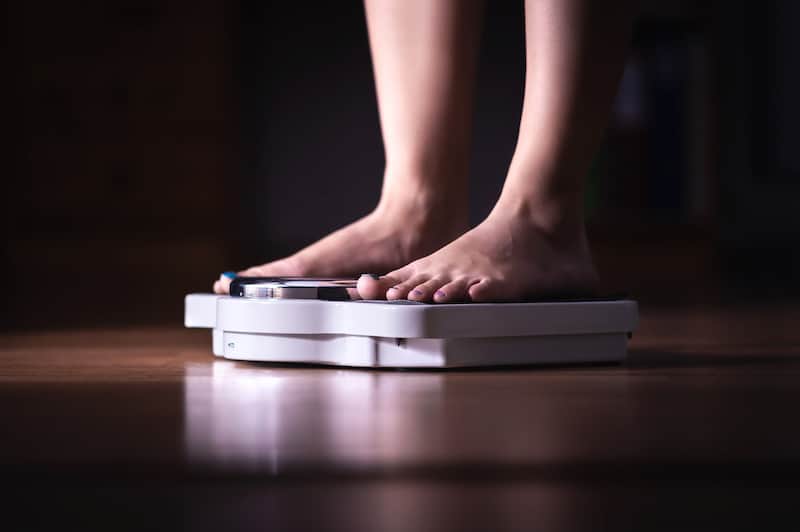So you filed a VA Obesity claim. At some point you have seen this phrase in a VA Ratings Decision or the decision of a BVA Judge:
“Your obesity is not an injury or disease for VA purposes”.
As of August 26, 2021, this is no longer correct. On that date, my law firm won an appeal to the Federal Circuit, which held that the VA can indeed service connect obesity, just like it can service connect any other disability.
Now, let me say this up front – the Federal Circuit did not hold that all claims for obesity must be service connected. You are going to have to prove that your obesity is a current disability, and is related to something that happened in service.
So let’s talk about how you go about doing that?
Let’s first start with a discussion of what obesity is.
What is Obesity?
Many veterans, doctors and the VA view obesity as a “life-style disease.” In other words, they blame someone else’s obesity on diet, lack of self-control and exercise, and other lifestyle concerns. The uninformed see obesity as the result of this equation, and this only: Eat a lot of potato chips, don’t exercise….you’re going to become obese.
The American Medical Association responded, in 2013, to those patently absurd arguments:
“The suggestion that obesity is not a disease but rather a consequence of a chosen lifestyle exemplified by overeating and/or inactivity is equivalent to suggesting that lung cancer is not a disease because it was brought about by individual choice to smoke cigarettes.”
Here’s the real – medical – truth: obesity is the disease that results from a metabolic and hormonal disease state inside your body.
Said in layman’s terms – if you screw with the body’s metabolism and hormones, it’s going to put in motion a chain of events that leads to obesity.
And think about that for a minute….particularly Veterans that served in Vietnam and were soaked in Agent Orange….or Veterans that served in the Persian Gulf and Southwest Asia were forced to breathe air dense with chemical and particulate matter….
But until someone comes face to face with the exasperating experience of dealing with obesity, they often have no reason to learn what obesity is all about, how dangerous it is to be obese, and how hard and costly it is to treat obesity.
Most – almost 8 out of every 10 veterans – will do battle with obesity at some point in their life
We know, for example, that exposure to particulate matter, certain military vaccines and toxic chemicals will affect the body’s metabolic system. (This is the system that takes food and converts it to energy for the human body and waste to leave the human body.) These exposures may simply slow metabolism, or they may change the body itself. As a result, veterans gain weight.
Although there are many ways to diagnose obesity – and the different methods that your doctor uses might shed some light on possible causes and consequences – the most commonly used measure is the BMI or “Body Mass Index” Scale.
A doctor can diagnose obesity when your BMI is 30 or higher. Body Mass Index (BMI) is a mathematical calculation that supposedly eliminates family history, gender, age or race from an assessment of obesity. To calculate your BMI, divide your weight in pounds by your height in inches squared and multiply by 703. Your BMI is then translated into one of the following descriptions:
Below 18.5 Underweight
18.5-24.9 Normal weight
24.5-29.9 Overweight
30 and greater Obese
40 and greater Morbid or extreme obesity
Many years ago, I was one of the folks raising the alarm about Sleep Apnea, and how it was a hurricane headed right towards the veterans’ community.
If sleep apnea was a hurricane, obesity is a 150 foot tidal wave headed right towards the veterans’ community.
Did you know that, as of April 2019, the VA acknowledged that 78% of veterans are obese?
This is a significant problem, because obesity dramatically increases your risk of other diseases and health problems, such as heart disease, diabetes, high blood pressure and certain cancers.
The VA also knows that excess weight is estimated to cost at least $370 per patient per year in additional medical and non-medical cost. If 9,000,000 veterans get health treatment. through the VA, and if 78% of them are obese, then the VA is treating 7,020,000 obese veterans. At $370 per patient annually, the cost of veteran obesity to the taxpayer is nearly $260 million dollars.
Right wing snowflakes get their bikinis all twisted up about the cost of health care for veterans who are transgender. Little is known, right now, about how much VA pays for healthcare for transgender veterans, but we know that all of the military branches combined pay about $3 million per year. I don’t say that to marginalize either people who suffer from obesity or veterans who are transgender. I say that to remind you that the right wing news outlets serving you up hour-after-hour of outrage do NOT have your best interests at heart. They have no idea what they are talking about, no idea what the real problems are facing the veterans community.
Moving on…if you want to read more about the massive problems and costs associated with obesity in the veteran and military communities, you can read the VA Clinical Guidelines on obesity published in 2015. Download a copy here (from the VA’s website) or from here (the Veterans Law Blog archives). Here’s another quote from that same report: “The active military and Veteran populations have been similarly affected by the obesity epidemic….Obesity is a chronic disease requiring lifelong commitment to treatment and long-term maintenance.”
Can Veterans service connect obesity?
Yes.
As of August 26, 2021, yes. Without any doubt. Without any qualification.
But it has not always been that way.
The story of whether or not a veteran can service connect obesity begins in 2010.
That year, in Hunt v. Shinseki, No. 08-3243, 2010 U.S. App. Vet. Claims LEXIS 956 (Vet. App. May 25, 2010), the Veterans Court took on the issue of how to service connect obesity. In that appeal, the veteran argued that his PTSD aggravated his weight situation, such that it caused obesity. He filed a claim to service connect obesity, which the Regional Office denied, asserting that “obesity was not a disability for which VA benefits could be awarded.”
The BVA also refused to service connect obesity, trotting out the tired line that “obesity alone is not considered a disability for which service connection may be granted.” Now, to be clear – the Veterans Court affirmed the Board’s denial of the VA obesity claim….. but not for the reason that you think.
Read what Judge Hagel wrote in the Veterans Court opinion:
“[A]pplicable VA regulations use the term “disability” to refer to the average impairment in earning capacity resulting from diseases or injuries encountered as a result of or incident to military service. See Allen v. Brown, 7 Vet. App. 439, 448 (1995); Hunt v. Derwinski, 1 Vet.App. 292, 296 (1991); 38 C.F.R. § 4.1 (2009). The question is thus whether Mr. Hunt’s obesity is a disability–i.e., a condition causing impairment in earning capacity.
The Veterans Court should have followed that line of reasoning.
SPOILER ALERT: The Federal Circuit used the same reasoning in 2021 to hold that a veteran can service connect obesity (assuming nexus) when the veteran establishes that their obesity functionally impairs their earning capacity.
But in 2012, the Veterans Court took a different tack in Eldridge v. Shinseki, CAVC Cause # 11-0308 (2012).
In Eldridge, the veteran was trying to service connect obesity. He was exposed to Agent Orange (it appears in the RVN from 1972-1974). Shortly after his discharge from service, the VA diagnosed him with what is called “exogenous obesity” with a doctor commenting that “there is no known internal organic cause for his obesity.” In other words, it was NOT because he drank a lot of beer and never worked out. Something outside his body caused it.
He filed a VA obesity claim, and the BVA eventually denied Mr. Eldridge, on the grounds that the VA Rating schedule did not list obesity as a VA disability. Specifically, the Board wrote that “[o]besity is not a disorder subject to service connection and the evidence does not show that obesity is a manifestation of a separately diagnosed disability.” Now, the VA’s attorneys – who we’ve written about before on this blog – argued that the Veterans Court “may not review the schedule of ratings for disabilities” adopted by the Secretary.
Judge Holdaway of the Veterans Court was persuaded by the VA’s attorneys and agreed that the BVA had a plausible basis for denying service connection, effectively adopting the BVA’s flawed reasoning.
In fairness to the Veterans Court, there is a different way to understand Eldridge. Though widely thought to stand for the holding that “you can’t service connect obesity” – or that claim to service connect obesity must always fail – I would argue that the decision is a little more nuanced. I would argue that Eldridge stands for the proposition that the Court is not able to review the VA’s decision to exclude obesity from its rating schedule.
Five years later, in 2018, the Veterans Court cemented the Eldridge approach when it issued a precedential decision in Marcelino v. Shulkin that cast into binding law that flawed analysis. Judge Schoelen, writing for the Veterans Court, held that it lacked jurisdiction to review that BVA decision refusing to service connect obesity because a) obesity is not recognized by VA as a disease or disability for service connection purposes, and b) it lacked jurisdiction to review the VA schedule of rating of disabilities.
That remained the law until August 2021.
Why? The law changed.
In addition to writing the Veterans Law Blog from 2007 – 2021, I’m an attorney with the veterans disability law firm of Attig | Curran | Steel, PLLC; in one of our cases, we persuaded the Federal Circuit to find that the Veterans Court legally erred when it found it lacked jurisdiction to review BVA decisions that refused to service connect obesity, because obesity was not listed on the VA rating schedule.
In Larson v. McDonough, the Federal Circuit returned to the solid reasoning from the Hunt appeal in 2010. The Circuit Court held that obesity – or any disabling circumstance – constitute a disability for VA purposes if it causes a functional impairment of earning capacity. The Federal Circuit reversed the Veterans Court’s prior holding that it lacked jurisdiction to review BVA determinations of what constitutes a disability.
Here’s how it went down: the law firm of Attig | Curran | Steel, PLLC, began working with a veteran in December 2016, after the BVA refused to service connect obesity and Dysmetabolic Syndrome (DMS).
The veteran had argued his obesity and DMS were related to a series of military vaccinations he received in the Desert Storm era, as well as his exposures to certain toxins and particulate matter while serving in the Middle East.
The VA and BVA both said that they would not service connect obesity and DMS because they could not be disabilities because the VA had created no impairment rating specifically for those conditions. The Veterans Court, in a memorandum decision by Judge Meredith, followed its prior precedent in Marcelino and concluded that the Court lacked jurisdiction to review BVA determinations of what does and does not constitute a disability.
The Federal Circuit reversed the decision of the Veterans Court, noting that the issue of what constitutes a disability for service connection purposes was defined and resolved in 2018 by Saunders v. Wilkie.
The Federal Circuit remanded the issue to the Veterans Court and BVA to address whether Mr. Larson’s obesity and DMS were, as a matter of fact in his case, a disability and whether it was service-connected.
HOW do you service connect obesity?
First, you have to assess whether your claim/appeal is in the Legacy or AMA process – that will help you determine which forms to file. That analysis is beyond the scope of this post, but you can read about the different types of AMA claim and the steps in the Legacy Appeals process in other posts on the Veterans Law Blog.®
To service connect obesity on a direct service-connection basis, you need to show the usual elements of a service connection claim: in-service event, current disability, and nexus.
Now, if you are a subscriber to the Veterans Law Blog® you can watch the “VA Service Connection” video training course that comes FREE with any subscription. In that video you will learn how to prove the in-service event and how to prove nexus.
In this post, I want to talk to you about how to show that your obesity is a disability for VA service connection purposes.
What you have to show is that your obesity causes a functional impairment of earning capacity.
How do you do that?
Well, this is not an EXHAUSTIVE list (meaning it is not the ONLY way to show a functional impairment of earning capacity resulting from obesity), but it should get you thinking:
Think of things you might do at work – or do to get to work – that could be impacted by obesity:
- walking speed
- balance control,
- sit-to-stand performance (a measure of mass specific lower limb power)
- endurance
- personal hygiene
- decreased lung performance
- difficulty bending over
- difficulty twisting at the waist
There are a LOT more functional impairments that can result from obesity: the best thing to do is make a simple list of what your body cannot do – or struggles to do – now that you are obese. Show how those functional impairments affect your earning capacity. – how they limit your ability to earn money.
Now, earning capacity is not clearly defined by the VA. So I can’t tell you exactly how to prove the impairment to your earning capacity.
However, here is how I think about it as an attorney: Earning capacity is a legal term used by most courts in personal injury cases to designate economic losses due to the impairment of the ability to earn money. Loss of earning capacity is very different, however, from a loss of actual or expected earnings.
Think beyond obesity….
Here is a link to the Federal Circuit’s decision in Larson v. McDonough. As you read it, I want to encourage you to think outside the box. While obesity is getting all the attention in this decision, read how the Circuit Court reinforced the holding of Saunders – a diagnosis of a condition, or the fact that your condition is a syndrome and not a disease, does not come into play when you are tryjng to service connect a disability.
You don’t need a diagnosed medical condition to establish that you have a disability in a service connection claim.
You don’t need a diagnosed medical condition to establish that you have a disability in a service connection claim.
You only need to show that whatever you are experiencing in terms of your health, is that it is causing a functional impairment of your earning capacity.
That’s it. That’s all you need to show.
I look forward to your questions about how to service connect obesity in the comments below.






